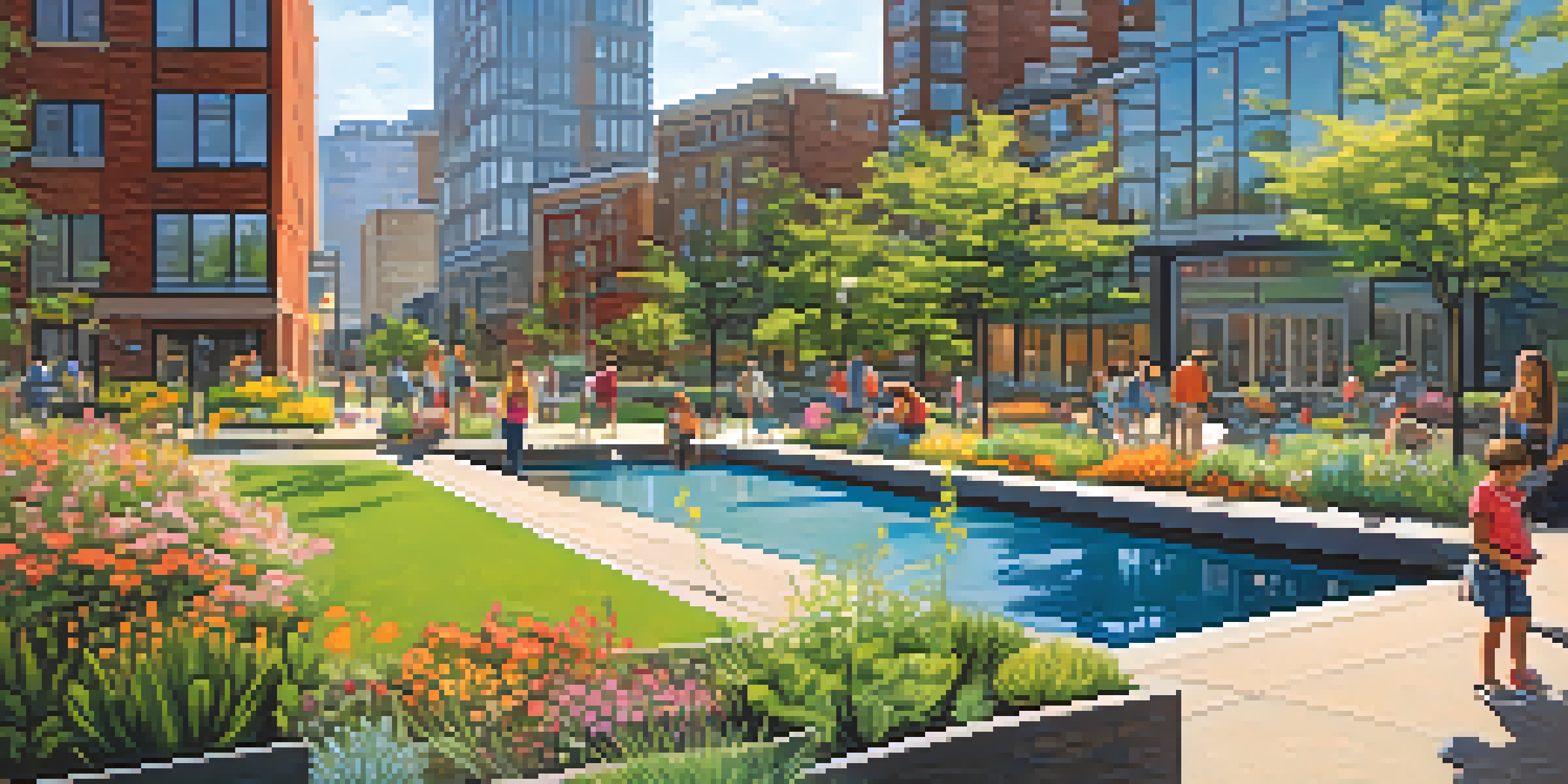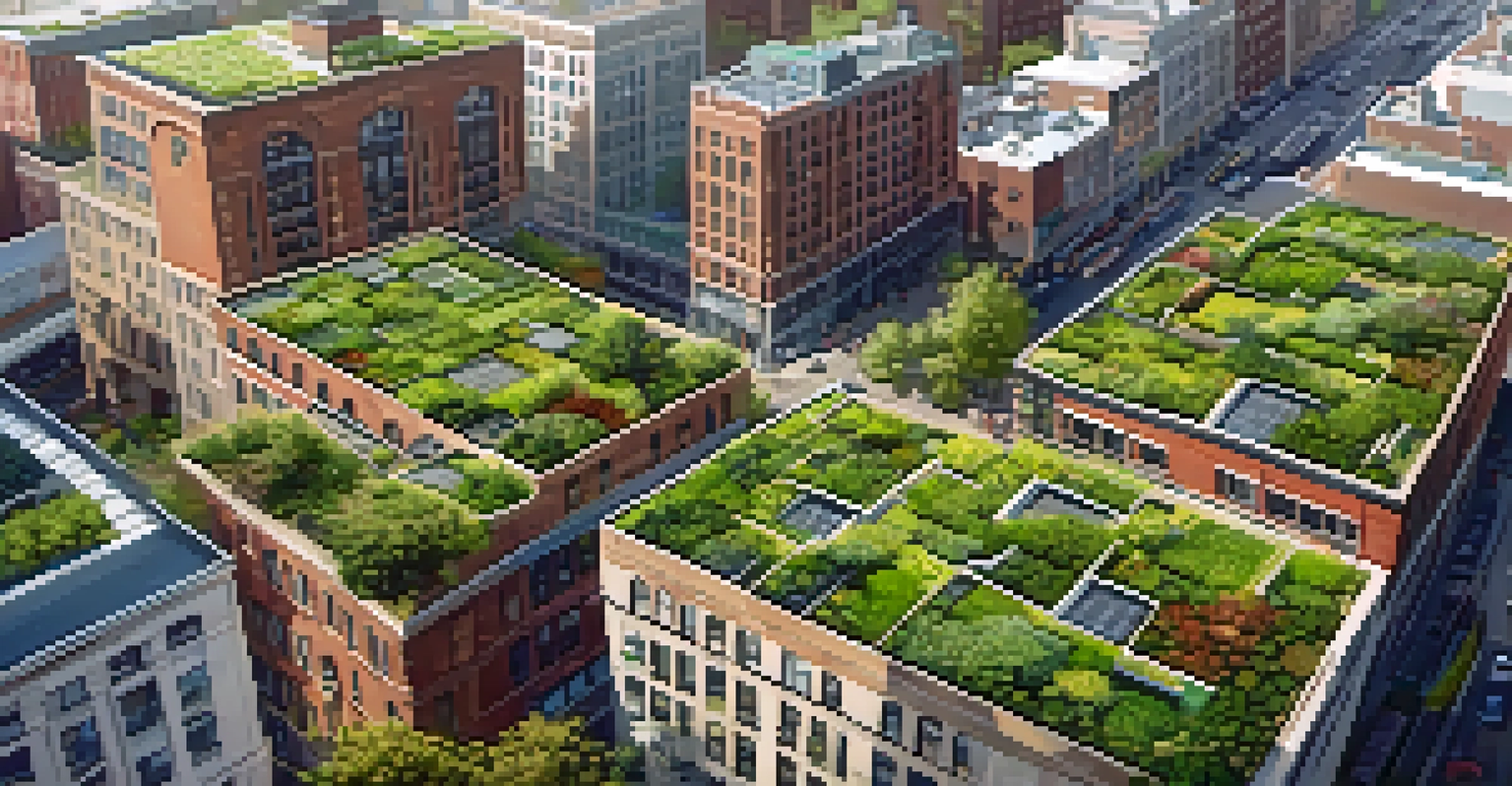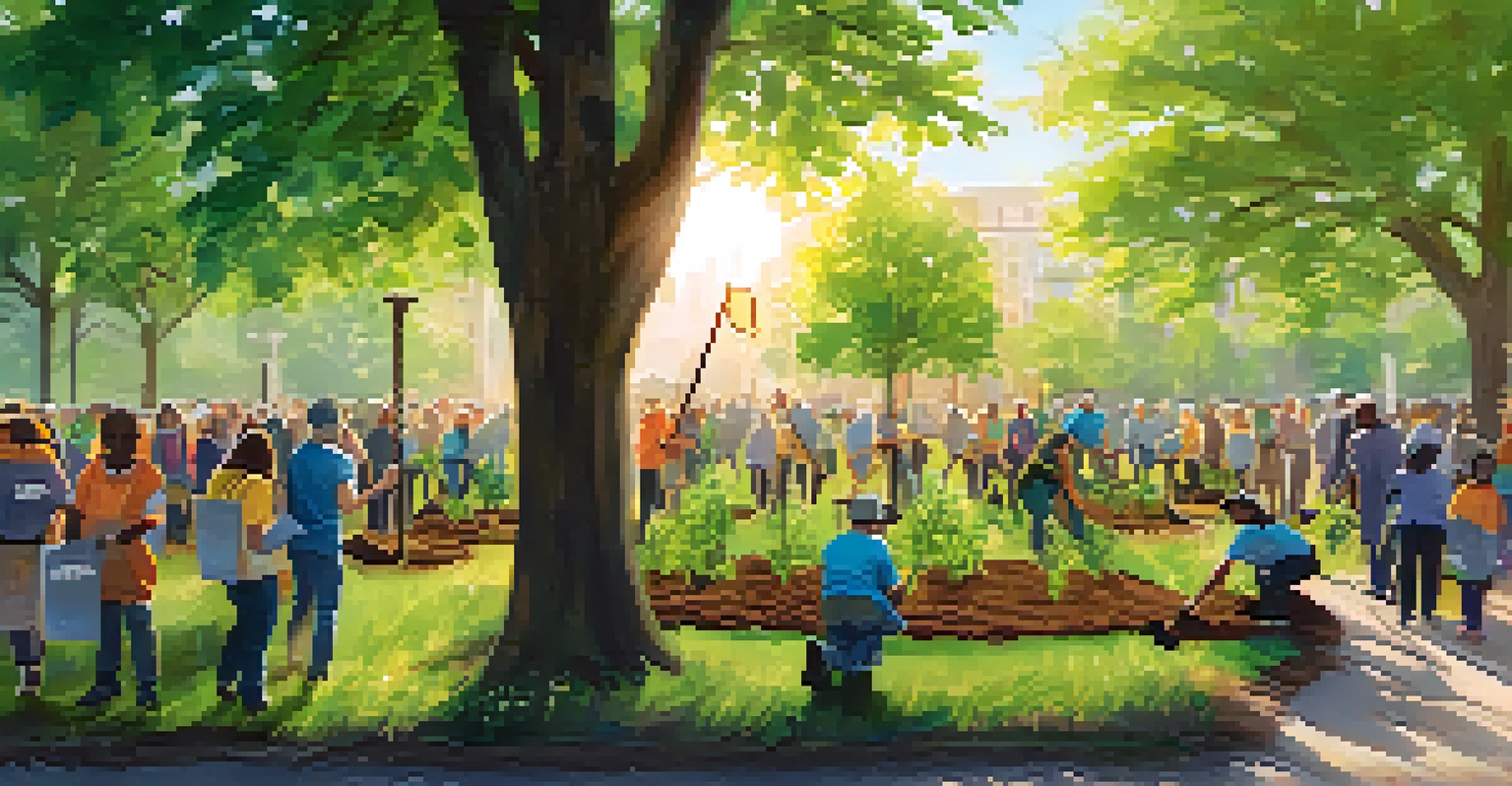Jersey City's Green Infrastructure: A Sustainable Future Ahead

Understanding Green Infrastructure and Its Importance
Green infrastructure refers to an interconnected network of natural systems that provide benefits to the environment and communities. These systems include parks, green roofs, rain gardens, and permeable pavements, which work together to manage stormwater, enhance biodiversity, and improve air quality. By integrating these natural solutions into urban planning, cities can tackle pressing challenges such as flooding and pollution while promoting a healthier environment.
We won't have a society if we destroy the environment.
In Jersey City, the implementation of green infrastructure is not just a trend; it's a necessity. As urban areas expand and climate change intensifies, traditional drainage systems struggle to cope with heavy rainfall and rising sea levels. By adopting green infrastructure, Jersey City is taking proactive steps to mitigate these effects, ensuring that the community remains resilient in the face of environmental challenges.
Moreover, green infrastructure offers social benefits as well. It creates vibrant public spaces that enhance the quality of life for residents, encourages outdoor activities, and fosters community engagement. With these multifaceted advantages, it's clear that investing in green infrastructure is a step towards a more sustainable and livable Jersey City.
Current Green Initiatives in Jersey City
Jersey City is already making strides in green infrastructure through various initiatives aimed at enhancing its urban landscape. One notable project is the installation of rain gardens throughout the city, which help absorb excess rainwater and reduce flooding. These gardens not only serve a functional purpose but also beautify neighborhoods, making them more inviting for residents and visitors alike.

Another significant effort is the creation of green roofs on commercial buildings, which provide insulation, reduce energy costs, and help filter rainwater. By transforming unused rooftop spaces into lush gardens, Jersey City is setting an example for urban areas nationwide. This innovative approach not only improves building efficiency but also contributes to the overall reduction of the urban heat island effect.
Green Infrastructure Benefits Communities
Green infrastructure enhances urban environments by managing stormwater, improving air quality, and creating vibrant public spaces.
Additionally, the city is working on expanding its parks and green spaces, which are crucial for enhancing urban biodiversity. These areas not only act as habitats for wildlife but also give residents a place to connect with nature. With every new initiative, Jersey City is further embedding sustainability into its urban fabric.
Community Involvement: A Key to Success
The success of Jersey City's green infrastructure initiatives heavily relies on community involvement. Local residents and organizations play a vital role in advocating for sustainable practices and participating in projects that promote environmental stewardship. Whether it's through community clean-up days, tree planting events, or educational workshops, engaged citizens are helping to drive the green movement forward.
The environment is where we all meet; where we all have a mutual interest; it is the one thing all of us share.
One example of community involvement is the Jersey City Environmental Commission, which serves as a platform for residents to voice their concerns and ideas regarding environmental issues. This collaborative approach fosters a sense of ownership among community members, empowering them to take initiative and contribute to the city's sustainability goals. It's a testament to the power of collective action in creating meaningful change.
Furthermore, educational programs in schools and community centers are raising awareness about the importance of green infrastructure. By teaching young people about environmental stewardship, Jersey City is nurturing the next generation of eco-conscious citizens. This grassroots effort is essential for sustaining momentum and ensuring that green initiatives continue to flourish.
Challenges Facing Green Infrastructure Implementation
Despite the progress Jersey City has made, challenges remain in fully implementing green infrastructure. Funding is often a major hurdle; while there are grants and programs available, securing sufficient financial resources can be difficult. Local governments must navigate budget constraints while trying to prioritize sustainability projects, which can lead to delays or scaling back of initiatives.
Another challenge is public perception and understanding of green infrastructure. Some residents may be skeptical about the effectiveness of these systems, particularly if they are unfamiliar with their benefits. Education and outreach become crucial in addressing these concerns, as local governments and organizations must communicate the long-term advantages of investing in green solutions.
Community Involvement Drives Success
Active participation from residents and local organizations is crucial for advancing Jersey City's green initiatives and fostering environmental stewardship.
Finally, ongoing maintenance is essential for the success of green infrastructure. Unlike traditional infrastructure, which may require less frequent attention, green systems need regular care to thrive. Ensuring that these spaces are maintained properly is vital for their functionality and longevity, thus requiring a commitment from both the city and the community.
The Role of Technology in Green Infrastructure
Technology is playing an increasingly important role in the development and management of green infrastructure in Jersey City. Smart sensors and monitoring systems can help track rainfall, soil moisture, and other environmental factors, allowing for more efficient management of green spaces. This data-driven approach enables city planners to make informed decisions that optimize the performance of green systems.
Additionally, technology can enhance community engagement by providing platforms for residents to report issues or share their ideas. Apps and online resources can facilitate communication between citizens and local governments, fostering a collaborative environment where everyone has a voice in the sustainability conversation. This transparency can lead to increased trust and participation from the community.
Moreover, advancements in green technology, such as innovative materials for permeable pavements and biofiltration systems, are continually improving the effectiveness of green infrastructure. By staying at the forefront of these developments, Jersey City can ensure that it is implementing the best solutions available to address urban challenges.
The Future of Green Infrastructure in Jersey City
Looking ahead, the future of green infrastructure in Jersey City appears promising. With a growing awareness of the importance of sustainable practices, both residents and local leaders are committed to expanding green initiatives. As climate change continues to impact urban areas, the need for effective solutions will only increase, and Jersey City is poised to lead the way.
Future projects may include more extensive green corridors that connect parks and natural areas, promoting biodiversity while providing residents with safe spaces for recreation. Enhanced collaboration with local businesses and organizations can also yield innovative partnerships that further advance the city’s sustainability goals. These collaborative efforts can amplify the impact of green infrastructure projects, making them more successful.
Technology Supports Green Solutions
Innovative technologies and smart systems are essential for effectively managing and maintaining green infrastructure in urban settings.
Ultimately, the vision for Jersey City is one where green infrastructure is seamlessly integrated into everyday life, creating a resilient, sustainable urban environment. This ambitious goal is not just about environmental health; it's about creating a community where people can thrive alongside nature.
Conclusion: A Commitment to Sustainability
In conclusion, Jersey City’s commitment to green infrastructure reflects a broader movement towards sustainability and resilience in urban areas. The city's ongoing initiatives demonstrate that it's possible to blend nature with urban living, creating spaces that benefit both the environment and the community. As challenges persist, the city’s proactive approach serves as a model for others looking to embrace green solutions.
With active community involvement and the support of technology, Jersey City is well on its way to achieving its sustainability goals. Each green project not only addresses immediate environmental concerns but also contributes to the long-term health of the community. By prioritizing green infrastructure, Jersey City is investing in a brighter future for generations to come.

Together, residents, local leaders, and organizations can ensure that green infrastructure continues to flourish, making Jersey City a shining example of sustainable urban living. As we look to the future, the city stands as a testament to the power of collaboration in creating a more sustainable world.